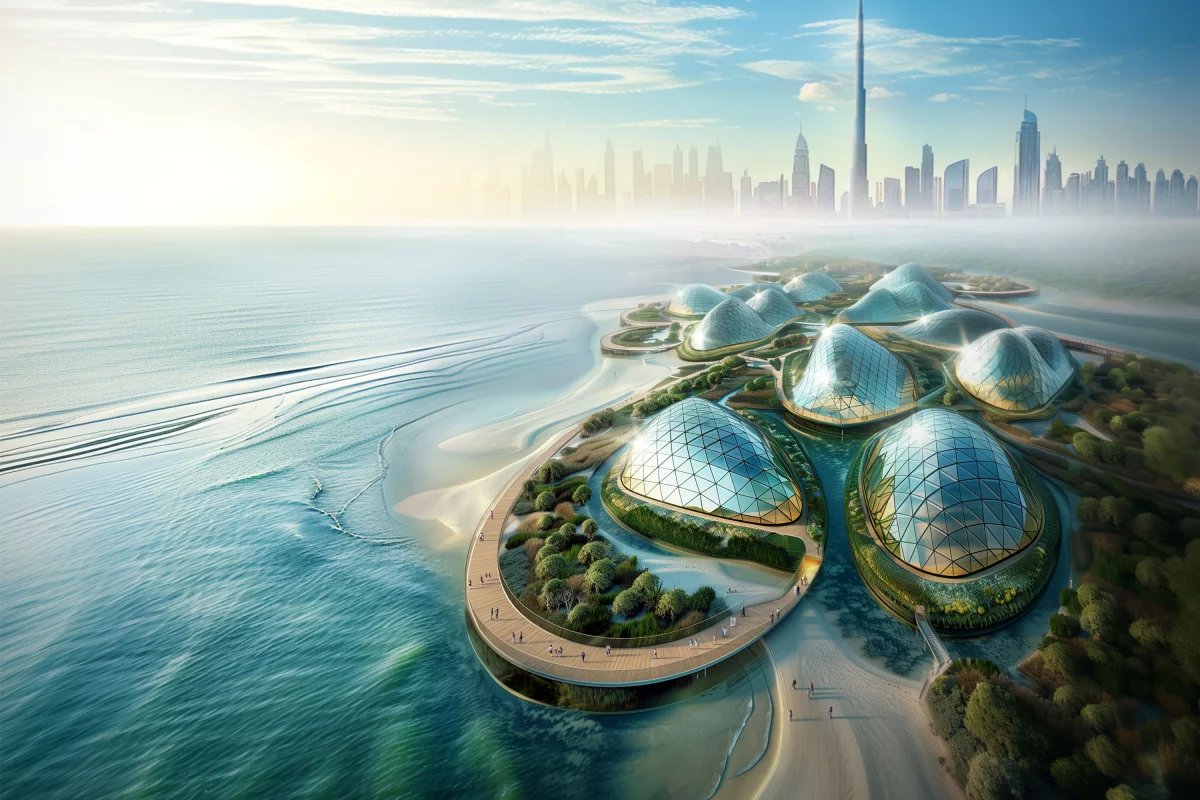Dubai already boasts the world's tallest skyscraper, with the world's tallest residential tower on the way too. Now local firm Urb envisions transforming its shores with the world's largest coastal regeneration project. The ambitious development would involve planting over 100 million mangrove trees, safeguarding the city from erosion and rising sea levels.
Urb is no stranger to ambition itself and Dubai Mangroves follows its proposals for a huge climate-controlled cycle path and a somewhat similar development to this one focused around reef regeneration (which it also hailed as a potential world's largest). This new project would span over 72 km (almost 45 miles), and the main idea behind it is to protect coastal areas from erosion and to help sequester CO2.
"At the heart of this initiative are mangroves, known for their unique ability to sequester carbon, protect coastal areas from erosion, and support for marine life and food security," explains Urb. "With the capacity to absorb approximately 12.3 kg [27 lb] of CO2 annually per tree, the entire project can sequester 1.23 million tonnes [1.35 US tons] of CO2 each year, the equivalent of removing the CO2 emitted by more than 260,000 gasoline-powered passenger vehicles from the roads each year."
In addition to sequestering CO2 and helping natural sea defenses, the huge mangrove plantation would also serve as nurseries for marine life, improving fish stocks and helping to filter the water with their roots, says Urb. Planting such a mind-boggling number of trees would of course be a massive undertaking in itself and would take many years. To speed things up, Urb proposes using AI-powered drones and satellite imagery to monitor and enhance the growth and health of the mangrove trees.

Though the trees are the main focus, Dubai Mangroves would also include small beach parks and lots of social spaces and pathways. There would be a visitor hub to educate and engage the community and visitors about the importance of mangroves and broader environmental challenges facing the planet. Elsewhere would be a botanic museum and a nature center for research, education, and promoting environmental stewardship.
As of writing, Dubai Mangroves is still in the design stage and Urb has chosen six pilot studies that could be carried out to demonstrate its feasibility. Climate change is topical in Dubai at the moment following its terrible flooding, so perhaps it, or something like it, would make a welcome change from constructing massive gleaming buildings.
Source: Urb








